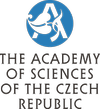Metabolism and physiological function of cytokinins
We have proposed a model for the metabolic regulation of cytokinin contents and interrelation between cytokinins and auxins based on cytokinin accumulation in competent cells, stimulation of cytokinin degradation by substrate-induced cytokinin oxidase/dehydrogenase, and cytokinin inactivation by glycosylation as well as by immobilization due to binding to specific cytokinin-binding proteins (Kamínek et al., Physiol Plant 1997; 2003).

Proposed model illustrating regulation of cytokinin levels in co-operation with auxin and its significance in induction and subsequent development of induced physiological events (according to Kamínek et al., Physiol. Plant. 117: 453–458, 1997, updated). CK – cytokinin, CKX – CK oxidase/dehydrogenase, CBP – CK binding protein, iPMP – isopentenyladenosine, 5’-monophosphate, IPT – isopentenyl transferase
This model elucidates mechanisms of establishment of transient hormonal imbalance leading to induction of specific physiological and morphogenic processes and subsequent re-establishment and maintenance of hormonal homeostasis required for further development and termination of induced physiological events. We have been verifying the validity of this model in in vitro cultures of plant cells and tissues as well as in intact plants, in which the content of native cytokinins was experimentally modified either by exogenously applied natural or synthetic cytokinins (Motyka et al., Physiol Plant 2003) or by expression of genes encoding enzymes participating in regulation of levels of precursors (farnesyl diphosphate synthase; Manzano et al., Plant Mol Biol 2006), biosynthesis (isopentenyl transferase; Galichet and Hoyerová et al., Plant Physiol 2008; Sýkorová et al., J Exp Bot 2008; Yevdakova et al., J Plant Growth Regul 2008), degradation (cytokinin oxidase/dehydrogenase; Werner et al., PNAS 2001 ; Werner et al., Plant Cell 2003; von Schwartzenberg et al., Plant Physiol 2007; Mýtinová and Motyka et al., Plant Growth Regul 2011) of cytokinins and cytokinin signal transduction (Frank et al., Plant Physiol 2000). Using mutants of model plants (moss Physcomitrella, Arabidopsis) we have also confirmed that phenotypic changes reflect proportions between cytokinin and auxin levels as well as changes in corresponding gene expression and enzyme activities (Yevdakova et al., J Plant Growth Regul 2008; Dwivedi et al., Plant Growth Regul 2010).
Metodically, we have developed a novel extraction and purification procedure for phytohormones allowing separation of auxin and abscisic acid from cytokinins (Dobrev a Kamínek, J Chromatogr A 2002) and their reliable identification and quantification by 2D-HPLC (Dobrev et al., J Chromatogr A 2005). We have evaluated efficiency of different methods of cytokinin extraction and purification and optimized the procedure reducing contents of interfering substances and thus enhancing responses of labelled internal standards during cytokinin quantification by mass spectrometry (Hoyerová et al., Phytochemistry 2006). We have also developed a method for simultaneous analysis of cytokinin oxidase/dehydrogenase and zeatin reductase enzyme activities in plants. On this basis we have found competitive effects of both enzymes in regulation of cytokinin concentrations and have determined their roles for maintenance of hormonal homeostasis (Gaudinová et al., J Plant Growth Regul 2005).
Using various model plants we have extended knowledge concerning physiological significance of cytokinins in control of plant morphogenesis (Sriskandarajah et al., J Plant Growth Regul 2006) and senescence (Ananieva et al., Physiol Plant 2004a; 2004b and 2008; Conrad et al., Physiol Plant 2007) as well as in regulation of uptake and utilization of mineral nitrogen (Sýkorová et al., J Exp Bot 2008) and plant responses to abiotic stress (Havlová et al., Plant Cell Environ 2008; Dobrá et al., J Plant Physiol 2010; Mýtinová and Motyka et al., Biol Plant 2010).
Our present research is in addition to the above mentioned activities focused on understanding metabolism and physiological functions of cis-zeatin-type cytokinins (Gajdošová and Spíchal et al., J Exp Bot 2011) and elucidating potential control of cytokinin contents and activities in plants during the root-to-shoot transport (Kašík et al., Anal Bioanal Chem 2010). We also pay attention to possible utilization of our findings to increase resistance (Zhang et al., J Integrative Plant Biol 2010) and to improve productivity (Sýkorová et al., J Exp Bot 2008) of crop plants.
We collaborate with Institute of Plant Sciences, ETH Zurich, Switzerland (Prof. Wilhelm Gruissem), with National Laboratory of Plant Molecular Genetics, Shanghai Institutes for Biological Sciences, Chinese Academy of Sciences, Shanghai, China (Prof. Peng Zhang), with Biozentrum Klein Flottbek, Universität Hamburg, Hamburg, Germany (Dr. Klaus von Scwartzenberg), with Research Centre for Plant Growth and Development, University of KwalaZulu-Natal Pietermaritzburg, Scottsville, South Africa (Dr. Wendy Stirk, Prof. Johannes van Staden), with Acad. M. Popov Institute of Plant Physiology, Bulgarian Academy of Sciences, Sofia, Bulgaria (Dr. Kalina Ananieva, Prof. Evguéni D.Ananiev), with Institut de la terre et de la Vie, Université catholique de Louvain, Louvain-la-Neuve, Belgium (Dr. Michel Ghanem, Prof. Stanley Lutts) and other colleagues in the Czech Republic and abroad.

